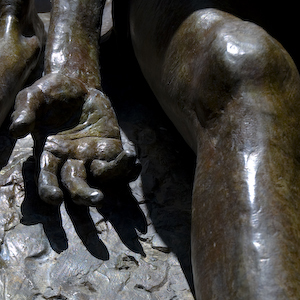Evaluating a DH Project
- olawunmiamusa8
- Mar 5, 2017
- 3 min read
The interesting aspects of working on a DH project are the exposure it gives, there are numerous prospects and tools available which allows for a digital humanist to explore into the endless possibilities in the IT world. Recently I was made to write a paper about my field of study, and it was impossible to resist writing about the challenges that comes with it. Taking a digital humanities course absolutely introduces a person to a new world, as well as makes you appreciate the world you’re in right now.
Having to work on an art map in a particular area makes is quite easy for me to relate with the art maps I would be evaluating in this post.
http://www.publicartboston.com/map/node
The aim of the project is to make art accessible in various parts of Boston in the comfort of your house or place of work. The design process for this art project was very thorough as they had to meet up with the criteria for excellence which the city of Boston created. Below is the list of criteria for excellence.
Criteria for Excellence
The Boston Art Commission promotes innovative and transformative artworks that:
Engage the community,
Enrich/ enliven the urban environment,
Are driven by a clear artistic vision,
Enhance the diversity of the existing collection,
Respond directly to their specific environment,
And possess durability appropriate to the lifespan of the work.
The project showed the general attitude of the people in the city based on how thorough they went into the research, the details provided for the art work, as well as the proper dissemination of information concerning art. One of the objectives f the project is to reassess the art in Boston which had been termed as stereotypical by critics for being “too white”, “too masculine”, or “too bronze”. They achieved this by ranking some of the area’s best works of art according to their beauty, and history. Art is really appreciated in Boston and it takes different forms, not just in painting or sculptures, it could also be in form of decorating the garden ducklings.
The tool used in the creation of this map is the Google Maps JavaScript API, which is the best for this kind of map as it could be easily accessible by its audience and already has the map embedded in its API.
<!DOCTYPE html> <html> <head> <!-- This stylesheet contains specific styles for displaying the map on this page. Replace it with your own styles as described in the documentation: https://developers.google.com/maps/documentation/javascript/tutorial --> <link rel="stylesheet" href="/maps/documentation/javascript/demos/demos.css"> </head> <body> <div id="map"></div> <script> function initMap() { // Create a map object and specify the DOM element for display. var map = new google.maps.Map(document.getElementById('map'), { center: {lat: -34.397, lng: 150.644}, scrollwheel: false, zoom: 8
As much as the main purpose of the project was to map out specific art to the locations where they can be found, the site also pays attention to the art itself and details each one. Consideration was also given to some of the artists as it posts interviews and their details on the page, this shows how much art is appreciated.
This projects the people of Boston as community people who would educate themselves on the history of their city and look for ways to appreciate a source of attraction in the city. The project allows for people who are interested in the project to join, they are also willing to promote upcoming artists who have studios and are willing to share their pieces. The mayor of the city is also actively involved in the project.
This project can be describe as a typical DH project because it allows for collaboration between various people, input is accepted in the project as it reaches out to people to get involved. However, if not properly monitored, mediocrity would set in as people would just send in pieces of artwork that would clog the map and make it unattractive.
Below are a few of the art that can be found in Boston.

There are five different identifiers/ markers on the map, labeled as permanent artwork, temporary artwork, upcoming artwork, paintbox, multiple artworks. This would help the reader navigate through the map as well as get a general distinction of the historical roots of the artworks.




Comments